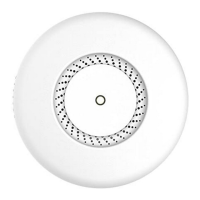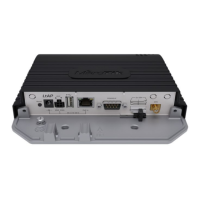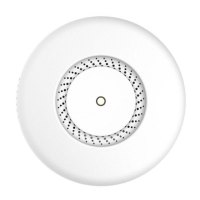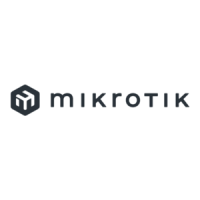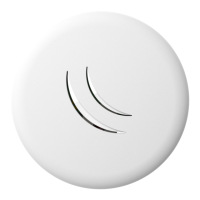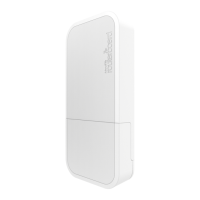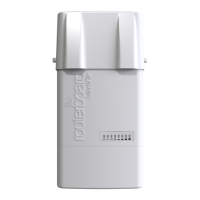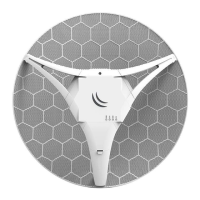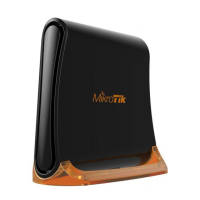Powering
The ethernet port accepts passive Power over Ethernet 8-30 V DC. The package contains a 24 V adapter and a PoE injector. The maximum power
consumption of the device is 21 W at 24 V.
Configuration
The device is configured as a bridge, with all interfaces bridged and DHCP Client enabled.
RouterOS includes many configuration options in addition to what is described in this document. We suggest starting here to get yourself accustomed to
the possibilities: .https://mt.lv/help
In case IP connection is not available, the Winbox tool ( ) can be used to connect to the MAC address of the device from the LAN side https://mt.lv/winbox
(all access is blocked from the internet port by default).
Expansion Slots and Ports
Built-in 5GHz 802.11ac/a/n wireless, AP/station/bridge modes supported (for CPE, AP, PtP modes)
One 10/100/1000 Gigabit Ethernet port, supporting automatic cross/straight cable correction (Auto MDI/X), so you can use either straight or
crossover cable for connecting to other network devices. The Ethernet port accepts 8-30 V DC powering from a passive PoE injector.
One USB 2.0 or 3.0 port (depends on model) for extra storage or 3G/4G modem
Buttons and Jumpers
The reset button has three functions:
Hold this button during boot time until the LED light starts flashing, release the button to reset RouterOS configuration (total 5 seconds).
Keep holding for 5 more seconds, LED turns solid, release now to turn on CAPs mode for managing the unit from a CAPsMAN server (total 10
seconds).
Or Keep holding the button for 5 more seconds until LED turns off, then release it to make the RouterBOARD look for Netinstall servers (total 15
seconds).
Operating System Support
The device supports RouterOS software with the version number at or above what is indicated in the RouterOS menu /system resource. Other operating
systems have not been tested.
We recommend clicking the "Check for updates" button and updating your RouterOS software to the latest version to ensure the best performance and
stability.
Federal Communication Commission Interference Statement
This equipment has been tested and found to comply with the limits for a Class A digital device, pursuant to Part 15 of the FCC Rules.
These limits are designed to provide reasonable protection against harmful interference in a commercial installation.
This equipment generates, uses, and can radiate radio frequency energy and, if not installed and used in accordance with the instruction
manual, may cause harmful interference to radio communications. Operation of this equipment in a residential area is likely to cause harmful interference
in which case the user will be required to correct the interference at his own expense.
FCC Caution: Any changes or modifications not expressly approved by the party responsible for compliance could void the user’s authority to operate this
equipment.
This device complies with Part 15 of the FCC Rules. Operation is subject to the following two conditions: (1) This device may not cause harmful
interference, and (2) this device must accept any interference received, including interference that may cause undesired operation.
Note: This unit was tested with shielded cables on the peripheral devices. Shielded cables must be used with the unit to ensure compliance.
Antenna Installation WARNING: It is the installer's responsibility to ensure that when using the authorized antennas in the USA (or where FCC rules apply);
only those antennas certified with the product are to be used. The installer should configure the output power level of antennas, according to country
regulations and per antenna type. Professional installation is required for equipment with connectors to ensure compliance with health and safety issues.
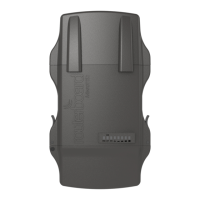
